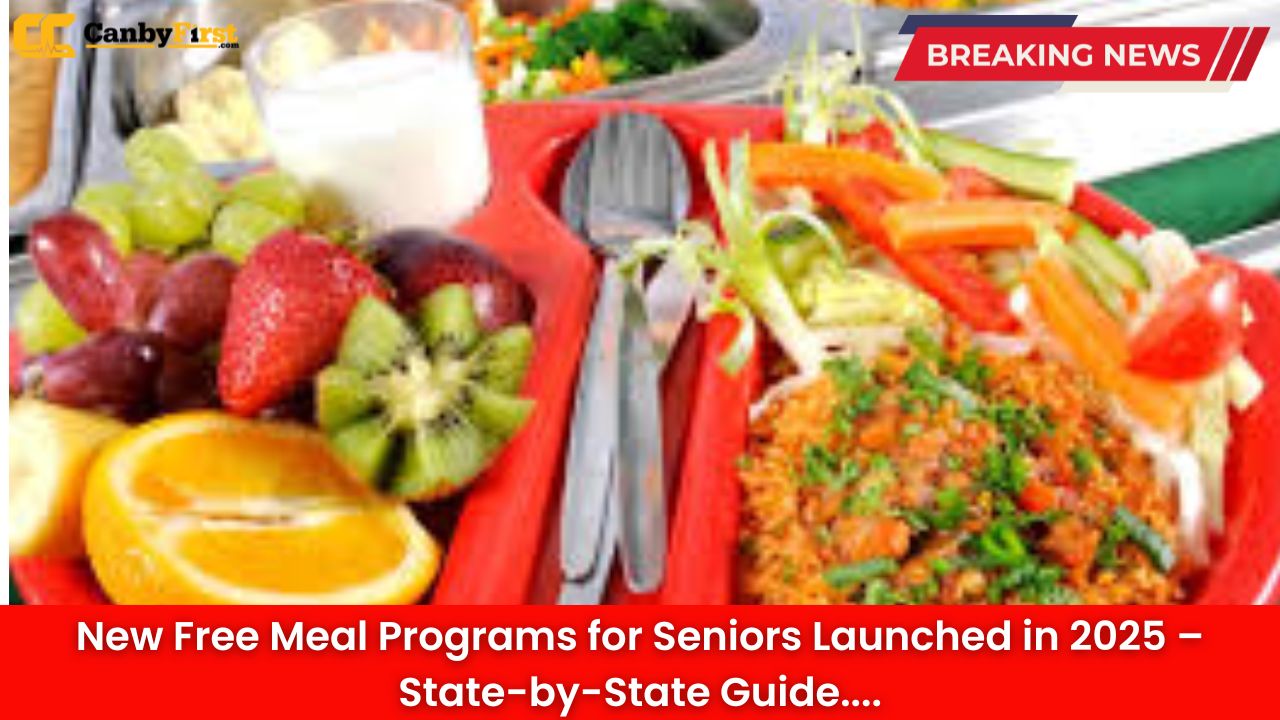In 2025, a wave of new free meal initiatives for seniors has been launched across the United States, marking one of the most comprehensive efforts to address food insecurity among older adults. These programs, supported by state governments, nonprofits, and community organizations, aim to ensure that no senior citizen goes hungry while also promoting healthier lifestyles and community connections.
Rising Need for Senior Support
The senior population in the US is growing rapidly, with millions entering retirement age each year. Many seniors live on fixed incomes, and rising costs of groceries, housing, and healthcare have made it increasingly difficult to maintain access to nutritious meals. Food insecurity among seniors not only impacts health but also contributes to emotional stress and isolation.
In response, the federal government, along with state-level programs, has rolled out specialized free meal offerings in 2025, tailored to the needs of seniors in different regions. State-by-state adaptations allow local communities to design menus and services that reflect cultural preferences, dietary needs, and logistical capacities.
Also Read
Core Features of the New Programs
The new free meal programs for seniors share several key elements across states:
-
Daily Free Meals: Seniors are provided with at least one balanced free meal every day. Many states also add breakfast and evening snack options.
-
Home Delivery Options: For seniors with mobility challenges, meal delivery services ensure accessibility.
-
Community Dining Hubs: Local centers and senior activity hubs host communal meals to reduce isolation.
-
Nutritional Considerations: Meals are designed with reduced sodium, balanced proteins, and diabetic-friendly options.
-
Cultural Sensitivity: States incorporate regional and ethnic cuisines to make meals more appealing and familiar.
State-by-State Highlights
While each state offers its own model, here’s a look at how leading states are rolling out the initiative in 2025:
-
California: The “Golden Senior Meal Plan” provides two hot meals daily through senior centers and food trucks. Emphasis is on plant-based nutrition and heart-healthy recipes.
-
New York: Senior community kitchens now prepare freshly cooked meals in partnership with local farms, ensuring both nutritional value and community economic support.
-
Texas: The state’s “Neighbor Plate Program” focuses on doorstep delivery, especially benefiting rural seniors who cannot travel to city centers.
-
Florida: With one of the highest populations of retirees, Florida offers seafood-rich menus and home-cooked-style dishes tailored for seniors in coastal and gated communities.
-
Illinois: The Chicago-area initiative integrates senior meal programs with transportation assistance, so participants can access both meals and wellness activities on the same day.
-
Arizona: Recognizing desert conditions, Arizona is introducing hydrating meals and expanded water delivery alongside traditional food distribution.
How Seniors Can Enroll
Enrollment in these meal programs varies by state, but most offer simple sign-up methods. Seniors or family caregivers can register at local community centers, town halls, or through dedicated phone hotlines. Many states also utilize online portals to allow quick digital registration. Eligibility generally prioritizes individuals aged 60 and above, though some programs extend access to younger residents with disabilities.
Impact on Community Health
Experts predict that these meal programs will significantly reduce malnutrition, hospital visits, and long-term healthcare costs for seniors. Beyond the nutritional benefits, seniors are finding new opportunities to connect socially by dining together. Shared meals combat loneliness, an issue that has grown significantly in the post-pandemic years.
Volunteers and younger community members are also playing a role by assisting with meal preparation and delivery, forging intergenerational bonds. This not only strengthens community ties but also improves overall quality of life for older adults.
Outlook for the Future
Though the programs are still in their first year of rollout, early feedback is overwhelmingly positive. Seniors across many states have praised the variety, freshness, and warmth of the meals. Policymakers are already indicating that if these initiatives prove successful, more permanent funding will be secured to continue free senior meals into the coming decade.
The push for free senior meals represents a pivotal step in acknowledging the dignity of older Americans and ensuring they do not struggle with hunger during their later years. Communities nationwide are hopeful that this will not only improve health outcomes but also foster a greater sense of belonging among seniors.
FAQs
1. Are these meal programs truly free for seniors?
Yes, all programs are fully funded by state and federal support, with no cost to eligible seniors.
2. Who qualifies for the free meals?
Most states require participants to be 60 years or older, though some extend eligibility to younger adults with disabilities.
3. Can meals be delivered directly to homes?
Yes, many states include meal delivery options for seniors with mobility or transportation challenges.
4. Do the meals accommodate health conditions like diabetes or hypertension?
Absolutely. Nutritionists help design meals with low sodium, diabetic-friendly, and heart-healthy options.
5. How do seniors apply for the program?
Applications can typically be made at local community centers, online state portals, or via senior hotlines.












